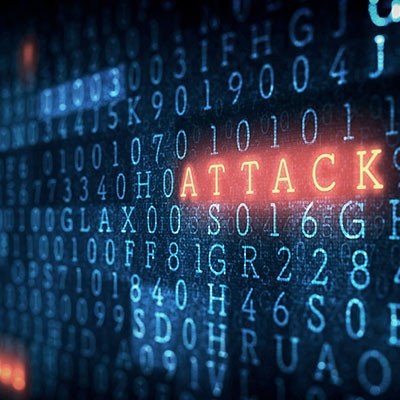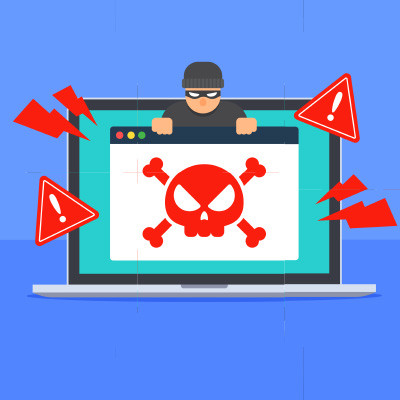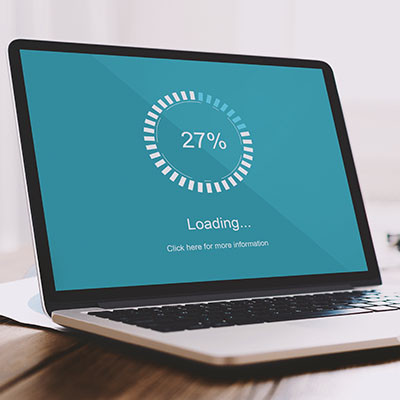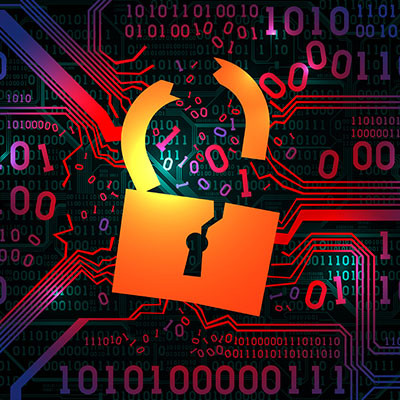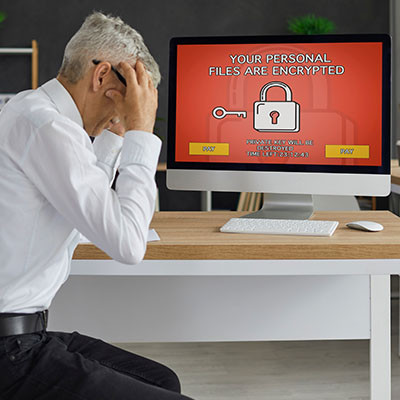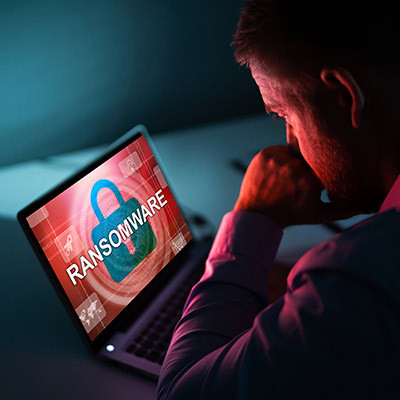When it comes to ransomware, you want to do all that you can to prevent an infection rather than respond to one. Of course, this isn’t always possible, so if you are struggling with a ransomware attack, you’ll need to act quickly to keep it from spreading. Let’s go over some of the steps that you’ll need to take to come out of a ransomware attack without too much scarring.
BNMC Blog
Ensuring that your computer's software stays up to date is always crucial for security and for the performance of the software. Outdated operating systems, web browsers, or other essential applications can result in malfunctions and expose you to potential threats. It's important to be aware that hackers can disguise malware as critical web browser updates.
Imagine a malicious computer virus meticulously tailored for your organization, possessing a complete understanding of your software, hardware, and the configurations that could inflict maximum damage. This cyberthreat infiltrates your system with alarming precision, targeting the most vulnerable facets of your business, and wreaking havoc in its wake.
Technology plays an important role in today’s society, and as such, cyberthreats look to subvert everyone’s reliance on it to their own benefit. Browser hijacking attacks are on the rise, so we thought we’d focus today’s blog on exploring some of the techniques used in these types of attacks and how small or medium-sized businesses can keep themselves safe.
Mobile malware isn’t as common as it is on desktops or laptops, but it does still exist. In fact, recently Google had to remove quite a few applications from the Google Play Store because they were infecting smartphones with malware and adware. If you have any of these apps, you need to take immediate action to uninstall them.
How often do you find random USB flash drives while you’re cleaning up your office? Even with cloud storage as common as it is, there are still times and places for USB drives, so it’s not uncommon to find them out and about. The problem, however, is that you don’t know what’s on them until you plug them in… and depending on the contents, you might be in for a world of trouble.
Imagine this scenario: you have just purchased a new computer, and you boot it up all excited to get right into setting it up, only to find that it is extremely slow and bogged down by all kinds of applications you didn’t know were pre-installed on it. This type of unwanted software can be a problem, especially for businesses when they want to get their new technology up and running as soon as possible.
Malware is a common enough issue that it’s pretty well established in the public lexicon, and much more pertinently, the most dangerous malware has seen an increase of 86% year over year. Worse, this kind of malware is largely the variety that takes users by surprise… making it all the more important that your team members are defended against them. To accomplish this, artificial intelligence could be an essential tool.
For years now, cybersecurity experts have reiterated time and again that it was only a matter of time before smartphones would become a target for major cyberattacks like ransomware. The facts are that most people use smartphones and most of these devices aren’t really protected with active antivirus software. It stands to reason that ransomware is developing into a major trend in mobile cybercrime. Since ransomware is the grand-daddy of threats, keeping it off your systems is essential.
It always helps to be a little skeptical of any new USB drives appearing in the workplace, especially if you are security-minded. Distributing threats via USB drives is a common practice amongst hackers, and a new threat called Raspberry Robin has the potential to be a serious problem for unsecured businesses with poor security hygiene.
Do you remember the good old days when you could go down to the store and purchase antivirus software that you installed off of a CD-ROM? It used to be the case that this would be enough, but if you think that’s going to cut it these days, think again. Businesses have so much more to worry about in the realm of cybersecurity.
You know the term “ransomware.” It’s all over the news, and it’s because it’s a huge threat to all types of businesses, regardless of size or industry. If you want to protect your business’ future, you have to implement security measures that will allow you to not only address ransomware but prevent these attacks altogether. Depending on the type of data you store, you might find yourself more susceptible to ransomware attacks.
Ransomware is one of the worst strains of malware that your business could encounter. It makes cyber-extortion possible and can be a big problem for any business that happens to come across it. You need to learn what ransomware is and how to protect your business from malware and other cyberthreats.
Ransomware can be disastrous for any business that gets hit by it, but not always in the way that you might expect. It might threaten business continuity and compromise data security, but it can also directly impact the way that the public views your company. In fact, the decision you make about whether or not to pay the ransom can be a major deciding factor in whether a customer will stick with you.
One of the most dangerous threats out there is ransomware, and for good reason. In many cases, the problems from ransomware can have far-reaching and devastating consequences for businesses, no matter which industry they operate in. Let’s take a look at why ransomware is so problematic and what you can do to stop it.
There are many cybersecurity threats out there, but the one that has cemented itself in the minds of business owners in recent years is ransomware. Ransomware encrypts data on the victim’s devices, forcing them to pay a ransom for the decryption key. As you might imagine, this practice is quite lucrative for cybercriminals—some more than others, of course.
While some threats don’t waste any time when they install themselves on your devices, like ransomware and malware, others tend to lurk in the background on your device and cause problems without being detected. A threat called MosaicLoader is one such threat, and it’s a pretty serious issue for businesses.
Ransomware is a threat that has seen exponential growth in recent years. We have witnessed it grow from a minor annoyance to a considerable global threat. Even the U.S. Justice Department has issued a declaration that they would begin investigating ransomware in much the same way that they would terrorism cases. Let’s take a look at how this policy could change the way your business should respond to these threats.
Running a business of any size comes with more than its fair share of risks, particularly if that business is on the smaller side. One major risk factor is the prospect of cybercrime and the impact it can have on a business. Let’s look at how this particular risk can influence the challenges that businesses must now contend with.

